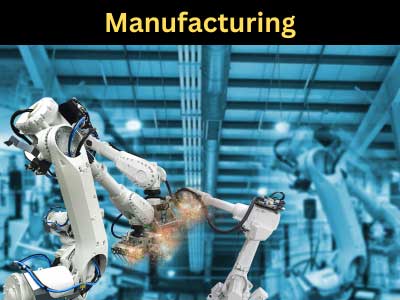Key Takeaway
Implementing a smart manufacturing system involves integrating advanced technologies like IoT, AI, and big data analytics into your production processes. Start by assessing your current capabilities and setting clear goals. Invest in sensors, connectivity, and cybersecurity to ensure seamless communication between machines and systems.
Next, train your workforce to handle new technologies and establish KPIs to measure success. Address challenges like data management and cybersecurity proactively. The benefits include improved efficiency, reduced downtime, and greater flexibility. Transitioning to smart manufacturing can position your business at the forefront of industry innovation.
Key Components of a Smart Manufacturing System
Smart manufacturing systems are built on core components that ensure streamlined operations and optimized production. At the heart of smart manufacturing lies connectivity. Machines, sensors, and devices must communicate seamlessly through the Internet of Things (IoT), allowing real-time data flow across the production floor. Cloud computing plays a vital role, enabling data storage and processing from anywhere, supporting fast decision-making.
Another critical element is automation, from robotic arms handling repetitive tasks to AI-driven systems managing complex operations. Big data and analytics provide insights into production trends and performance, helping manufacturers predict issues and improve efficiency. Cybersecurity is equally important to protect sensitive data and prevent potential disruptions in the system.

Technology and Infrastructure Requirements
Implementing a smart manufacturing system requires modern infrastructure capable of supporting advanced technologies. High-speed internet connectivity, IoT devices, and sensors are essential to enable real-time data capture. The cloud infrastructure must be robust enough to handle massive data loads, providing storage and computational power while maintaining system scalability.
Edge computing plays a crucial role as well, especially for time-sensitive processes. It allows data processing closer to the source, reducing latency. Smart factories also rely on advanced robotics, artificial intelligence, and machine learning to optimize processes. Additionally, integrating 5G technology can enhance the responsiveness of these automated systems, reducing lag and improving overall efficiency.
Steps to Transition from Traditional to Smart Manufacturing
Transitioning from traditional manufacturing to smart manufacturing involves several steps. First, businesses must assess their current capabilities, identify gaps in their operations, and set clear goals for improvement. It is crucial to create a roadmap, prioritizing the gradual implementation of new technologies rather than a full-scale overhaul. Start by introducing IoT devices and automated systems to collect and analyze data from machines and processes.
Next, invest in employee training. The workforce needs to understand and operate advanced technology and adapt to new workflows. Businesses should also ensure that their data infrastructure is secure and scalable, laying the foundation for further innovation. Lastly, monitor the system’s performance and continuously optimize it to meet production targets and adapt to changing demands.
Benefits of Implementing Smart Manufacturing
The benefits of smart manufacturing are substantial. One of the most significant advantages is the improved efficiency gained from automation and real-time data analytics. Smart systems enable manufacturers to make quick, informed decisions, leading to optimized processes, reduced waste, and better use of resources.
Another benefit is enhanced product quality. Smart systems allow for continuous monitoring and predictive maintenance, ensuring that machinery operates at peak performance. This reduces downtime and minimizes defects in the final product. Additionally, the ability to quickly adapt to market changes and customer demands provides a competitive advantage in fast-moving industries.
Common Challenges in Smart Manufacturing Adoption
Despite the potential rewards, adopting smart manufacturing can present several challenges. One major hurdle is the high upfront cost of technology investment. Infrastructure upgrades, installation of IoT devices, and training employees all require significant financial resources. Additionally, integrating new systems into existing workflows may cause temporary disruptions, and businesses may face resistance from employees who are unfamiliar with digital technologies.
Another common challenge is data security. As systems become interconnected, vulnerabilities to cyberattacks increase. Protecting sensitive data and ensuring that all components work securely is essential to prevent breaches or operational failures. Lastly, businesses may struggle to manage and analyze the large volumes of data generated by smart manufacturing systems without proper tools or expertise in place.
Conclusion
Successfully implementing a smart manufacturing system requires businesses to build a solid foundation with the right technological infrastructure. This includes investing in IoT devices for real-time data collection, advanced automation systems, and cloud-based platforms to ensure seamless data flow and analysis. The transition should be phased, starting with strategic enhancements in key areas like automation, predictive maintenance, and production monitoring. Employee training is crucial for helping the workforce adapt to new technologies and workflows.
Addressing challenges, such as high upfront costs and data security concerns, is vital. By focusing on these areas, manufacturers can improve productivity, reduce operational costs, and enhance overall product quality. This proactive approach will allow businesses to remain competitive and agile in the rapidly evolving industrial landscape, setting the stage for long-term growth.
